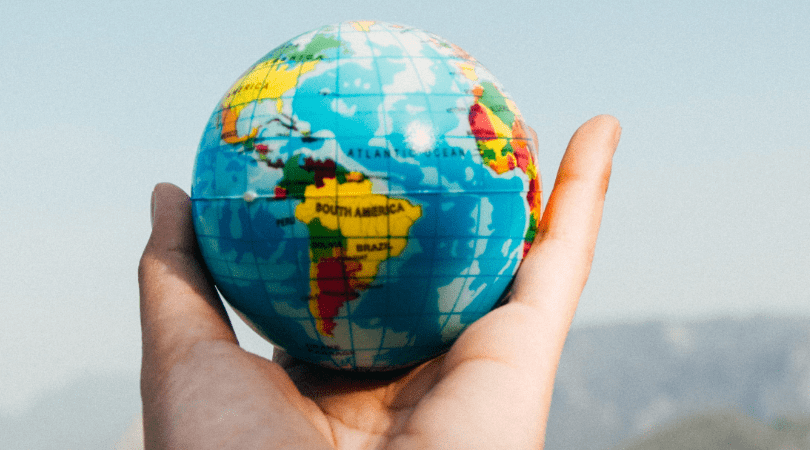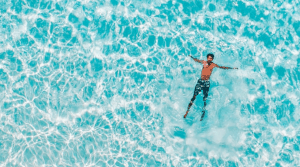
Water makes up around 71% of the Earth’s surface and continents and islands cover the rest of it. More than 96% of the Earth’s water is contained in oceans and seas, while glaciers, lakes, rivers make up the rest of it.
Water is everywhere. As you may know, more than 60% of the human body is made of water, and there is large amount of water contained in living organisms. Nevertheless, that amount is insignificant when compared to the amount contained in the biggest oceans.
How is Water Distributed?
As we already mentioned, the distribution of reserves of water on Earth’s surface is very uneven, and the most substantial amount of it is contained in oceans and seas. In other words, the major part of Earth’s water is saltwater. When we write off the oceans, we have only 3 or 4% of the water left, and this is how it is distributed (you might be surprised):
- 69% of water is contained in glaciers, and polar ice caps
- 30% of it is underground
- All lakes and rivers provide only 1%
As you can see, the most significant percentage of freshwater is locked up in glaciers and ice caps. Some countries are using melting water as drinking water, but most glaciers still remain difficult to access. In fact, if all ice on the Earth melted, the sea level would rise to an altitude of 106 inches (2.7 km)!
The Mass of Water
Have you ever wondered how much water contributes to the mass of our planet? Scientists have calculated that the total mass of water contained in all oceans is 1.35 x 1018 metric tonnes, which is only around 0.02 of the total mass of the Earth! It is hard to believe that the oceans which cover 71% of the Earth’s surface contribute so little in its mass.
How Much of the Earth is Water

Around 80% of global water usage involves surface water. Surface water includes oceans, lakes, rivers, and water streams. Unfortunately, ocean water can not be consumed by people because it has high salinity. As we already mentioned, around 30% of all water lays under the surface of the Earth.
Oceans and Seas
When we calculate the volume of all oceans on the Earth, we come to the number of 0.3 billion cubic miles! Here is a list of the biggest oceans and seas:
The Pacific Ocean – The most considerable amount of Earth’s water is contained in the Pacific Ocean! The Pacific Ocean alone takes up more than one-third of the Earth’s surface!
The Atlantic Ocean – It might be the second, but it is worth mentioning that it contains only half of the water contained in the enormous Pacific Ocean! Anyway, it covers around one-fifth of the Earth’s surface, which is still impressive!
The Indian Ocean – Located between Africa, Asia, Antarctica, and Australia, it is the third-largest ocean on the Earth.
The Southern Ocean – The other name for this ocean is the Antarctic Ocean because it encircles Antarctica.
The Arctic Ocean – The Arctic Ocean is the smallest ocean on the Earth. It is mostly covered by ice, due to low temperature.
Unfortunately, global warming is causing the temperature to rise faster than ever before, and scientists are afraid that all ice in the Arctic Ocean could melt if we don’t change something!
Speaking of seas, the biggest seas are the Arabian Sea and the South China Sea. After them, the Caribbean Sea and the Mediterranean Sea.
Lakes
There are around 2 million lakes across the world. The Caspian Sea is the largest lake on the Earth. The second-largest is the Lake Superior, and it is also the largest freshwater lake on the Earth (we will explain this in more detail above). The third-largest lake is Lake Victoria – one of the African Great Lakes. And the fourth-largest lake is the Lake Huron, located on the border between the United States and Canada. Number five is Lake Michigan. Other big lakes are the Lake Tanganyika (Africa) and the Lake Baikal (the Russian Federation).
The Caspian Sea
Some people call it a sea, others call it a lake. It has salty water, and it is bigger than some seas. Then, why we haven’t put it on the list of the seas? It is the biggest inland water body on the Earth, and that’s why it is defined as a lake!
Rivers
The Amazon is the largest of all rivers. It is 3.980 miles long, and it contains 20% of all fresh water on the Earth! Some of the other rivers that provide an impressive amount of water are:
- The Congo in Africa
- The Orinoco and Rio de Plata in South America
- The Ganges and Yangtze in Asia
Groundwater

Modern technology has developed ways of extracting and purifying groundwater, and today it is easier to access the groundwater than ever before! The governments announced that each year, more groundwater would be used, if not for drinking than for industry which is also a great consumer of water.
Freshwater by Country
More than half of the Earth’s freshwater reserves are located in six countries. Those countries are Brazil, Russia, USA, Canada, China, and Colombia.
Brazil is definitely number one – this country alone accounts for almost 12% of the world’s freshwater! Nevertheless, nature has not evenly distributed water resources in this big country, so people in some regions of Brazil have difficulties in accessing freshwater. Some of the regions, like Sao Paulo, face drought.
On the other hand, Russia is famous for the deepest freshwater lake in the world! Lake Baikal contains around 1/5 of the world’s freshwater.
In the United States, around 77% of freshwater is surface water, and 23% is underground water. The most significant portion of freshwater is contained in lakes. Some of the largest lakes in the territory of the USA are Lake Superior, Lake Michigan, Lake Erie, and Lake Ontario.
Countries with Less Drinking Water
The quarter of the world’s population lacks access to clean water. Some of the countries that face the biggest issues are Uganda, Ethiopia, Nigeria, Ghana, and Congo. Those countries are often called “water-stressed” countries, to indicate that the majority of their citizens do not have access to safe drinking water.
Some of them are located in naturally dry regions with low rainfalls. Some of them are found in deserts. But the saddest thing is that some of those countries have water, but that water is so polluted that many people get poisoned by it and sometimes even death.
Uganda is in the worst situation: around 40% of its citizens have to travel half an hour to access safe drinking water!
But even more, developed countries are facing the same problem. For example, more than 60% of people in Mexico have to drink packaged water because the water in their region is not safe.
How can we save water?
With the rapid growth of the industry, water pollution significantly increased. We managed to do more harm to the Earth’s reserves of water in the previous 100 years than other generations did for centuries. Good news is that people and governments are becoming more conscious about water and scientists are coming with new technologies that will reduce the waste of water and water pollution.
But every citizen should contribute in some way. Even littlest changes that might seem silly can help in the long run. Stop wasting water while you brush your teeth, for example. If all of us give our contribution, no matter how small it is, something will change!
Now you know that water is everywhere, in our bodies as well as on our planet! On the other hand, it is so unevenly distributed and if you have access to fresh and clean water every day, keep in mind that you are a lucky one.
Water is necessary both for our bodies and for the whole planet to function normally. Without water, life on the Earth wouldn’t last long. We all need water to wash ourselves and our clothes, to cook food and of course to drink it. But we should never abuse it!
Just think about the future generations. They will still need water, even after hundreds of years, because no innovation could replace it. We should keep the water clean and safe so the other generations can enjoy it as we do.
